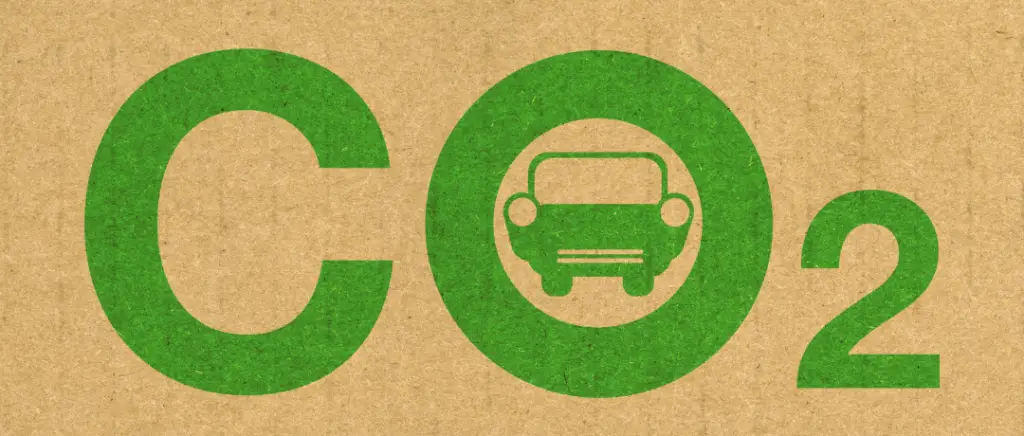Monday to Friday
9am - 12.30pm - 2pm - 7pm
The new terms of the ecological bonus
As a reminder, the environmental bonus is a measure that has been in force since 2008 and was created as part of the Grenelle Environment Forum. Its aim is to encourage the purchase or use (long-term leasing) of environmentally-friendly vehicles through the payment of a bonus to private individuals and businesses. The ecological bonus changed little until 2021, when it was reduced from €7,000 to €6,000 for the purchase of an electric car. The Finance Act 2024 instigates a more drastic overhaul of this scheme since the method of calculating the ecological bonus and its conditions of award have been completely overhauled since 1ᵉʳ January.
Environmental score
The main change affecting the eco-bonus is that it is no longer based solely on the calculation of the polluting emissions generated by a vehicle in use. Other criteria are now taken into account, such as l'carbon footprint linked to its productionThis means that if a car is produced in China and then exported to France, its eligibility for the bonus may be called into question, even if it is a low-emission vehicle. In practical terms, this means that if a car is produced in China and then exported to France, its eligibility for the bonus may be called into question, even if it is a low-emission vehicle.
The new criteria for awarding the eco-bonus are subject to a specific calculation method detailed in the decree no. 2023-886. It is ADEME (Agence de l'Environnement et de la Maîtrise de l'Energie), which is responsible for evaluating vehicles and assigning them a rating called environmental score. To be eligible for the eco-bonus, a vehicle must obtain a score of between 60 and 80 points.
The decree specifies that 70 % of the score covers the "stages in the life cycle of a vehicle before it is used on the road", in other words the conditions under which it is produced, the resources used in its manufacture, the materials used by the manufacturer and the transport of the finished product to the distribution or sales networks.
The 30 remaining % include "the use of recycled and bio-sourced materials in the vehicle, as well as the reparability of the vehicle". battery ".
These new constraints apply to new vehicles acquired or leased under the LDD scheme. after 15 December 2023.
Other conditions of eligibility for the eco-bonus
As in previous years, there is a ceiling on the purchase amount. The value of the vehicle (purchased or leased under the LDD) must be less than 47,000 euros.
On the other hand, the gross vehicle weight (GVW) of the car must not exceed 2.4 tonnes.
Finally, the owner or user of the vehicle undertakes to keep it for a minimum of one year or to reach a mileage of 6,000 km before transferring it, reselling it or terminating the leasing contract.
It should be noted that the ecological bonus now only applies to 100 % electric vehicles. Plug-in hybrid models are excluded from the scheme. A list of new cars eligible for the eco-bonus in 2024 has been published in the Official Journal of the European Union. Official Journal.
The Order of 5 February 2024 amended the Order of 14 December 2023 setting the list of eligible versions of electric passenger cars. The following models have been added:
Source : Légifrance
In addition, ADEME has set up a regularly updated tool giving access to eligible vehicle models.
Over 450 models are listed, including :
Also read → The 2024 ecological bonus: the list of 53 electric cars concerned
Aid reserved for private individuals?
On 13 February 2024, the government sounded the death knell for the ecological bonus awarded to legal entities. In concrete terms, companies owning or leasing an electric fleet will be deprived of valuable financial assistance, which amounted to €3,000 for the purchase or LDD lease of a 100 % electric car.
However, companies will continue to benefit from an environmental bonus of the same amount. for the purchase of electric commercial vehiclesas we shall see below.
For private individuals, this aid is still on the agenda, but lowered by €1,000 for the wealthiest households. The award criteria remain the same, namely the capped value of the vehicle and the household's reference tax income.
From 13 February 2024, the amount of the premium will therefore be 4,000 euros (compared with 5,000 euros in 2023). However, an additional €3,000 will apply to individuals with a reference tax income of €15,400 or less, bringing the bonus down to €7,000, as in previous years.
Second-hand vehicles have been removed from the scheme (the €1,000 bonus is no longer available for the purchase of a second-hand electric car).
Good to know: as before, the ecological bonus can still be combined with the conversion premium (the scales for which have also been lowered, and which now only apply to the purchase of a 100 % electric vehicle) and the additional premium of 1,000 euros granted to private individuals living or working in a low-emission zone.
Light Commercial Vehicles (LCVs)
Companies wishing to equip themselves withelectric vans or hydrogen can still benefit from a 3,000 ecological bonus.
The method for calculating eligibility is the same as for private vehicles, since the environmental score is also taken into account. However, fare ceilings and weight limits do not apply.
The company undertakes to keep the commercial vehicle for at least two years.
The tightening of the ecologic malus
The ecological malus is a tax that owners of new vehicles deemed to be polluting must pay when they register them. It applies to both private individuals and professionals.
The impact of the environmental penalty on company fleets depends on the make-up of the fleet. If a company decides to acquire vehicles that do not comply with current environmental standards, it is likely to face significant additional costs.
The 2024 Finance Act provides for a tougher environmental penalty (article 97). For companies, this measure is in addition to the constraints imposed by the LOM Act (Mobility Orientation Law). As a reminder, this law aims to promote the greening of professional fleets by imposing clean vehicle quotas. In 2024, companies with a fleet of more than 100 units must introduce at least 20 % of electric or hydrogen vehicles in their renewal.
The underlying objective of this measure, which is to encourage companies to review their sustainable mobility policies, has not yet been achieved. According to the NGO Transport and Environmentonly 4 out of 10 companies had revised their electrification quotas in accordance with the directives of the LOM law by 2023. For the time being, no financial penalties are envisaged and the LOM law remains an "incentive" measure.
In this context, the ecological malus is emerging as an alternative way of penalising companies that fail to apply quotas.
In 2024, the calculation of the environmental penalty will be based on the same criteria as in 2023, namely CO2 emissions and the vehicle weight. But these have been hardened considerably.
A lower trigger threshold
Since 1ᵉʳ January 2024, the threshold for triggering the malus has been lowered from 123 g/km to 118 g/km of CO2 (WLTP scale). The amount of the penalty starts at 50 euros and rises to a staggering maximum. 60,000 for emissions above 193 g/km.
With the lowering of the threshold, a new category of vehicles is now affected. Combustion-powered cars are explicitly targeted, as a very large number of models will be affected. Cars with mild-hybrid engines, with average emissions of 118g/km, will now be taxed.
| 2020 | 2021 | 2022 | 2023 | 2024 | |
|---|---|---|---|---|---|
CO2 emissions in g/km | 138 | 133 | 128 | 123 | 118 |
Maximum penalty | 20 000 € | 30 000 € | 40 000 € | 50 000 € | 60 000 € |
Revised ceilings
At the same time as the trigger threshold has been lowered, the maximum ceiling has been raised from 50,000 to 60,000 euros for vehicles emitting more than 193 g/km of carbon dioxide.
This measure is particularly aimed at the highest-emitting internal combustion vehicles, such as SUVs.
When the revision of the ceilings and the lowering of the trigger thresholds are put into perspective, the The resulting financial penalty can be multiplied by three. Before the Finance Act came into force, the purchase of a new vehicle emitting 194 g/km generated a penalty of €17,490. Now, for the same category, the penalty is €60,000... an amount that in some cases exceeds the value of the vehicle!
All the more so as the cap on the amount of the penalty at 50 % of the purchase value has also been abolished, with the government pointing to a lack of firmness towards owners of polluting vehicles.
2024 CO2 scale, WLTP method
| Emissions (g/km of CO2) | 2023 surcharge (in €) | 2024 surcharge (in €) |
|---|---|---|
| 118 | 0 | 50 |
| 119 | 0 | 75 |
| 120 | 0 | 100 |
| 121 | 0 | 125 |
| 122 | 0 | 150 |
| 123 | 50 | 170 |
| 124 | 75 | 190 |
| 125 | 100 | 210 |
| 126 | 125 | 230 |
| 127 | 150 | 240 |
| 128 | 170 | 260 |
| 129 | 190 | 280 |
| 130 | 210 | 310 |
| 131 | 230 | 330 |
| 132 | 240 | 360 |
| 133 | 260 | 400 |
| 134 | 280 | 450 |
| 135 | 310 | 540 |
| 136 | 330 | 650 |
| 137 | 360 | 740 |
| 138 | 400 | 818 |
| 139 | 450 | 898 |
| 140 | 540 | 983 |
| 141 | 650 | 1 074 |
| 142 | 740 | 1 172 |
| 143 | 818 | 1 276 |
| 144 | 898 | 1 386 |
| 145 | 983 | 1 504 |
| 146 | 1 074 | 1 629 |
| 147 | 1 172 | 1 761 |
| 148 | 1 276 | 1 901 |
| 149 | 1 386 | 2 049 |
| 150 | 1 504 | 2 049 |
| 151 | 1 629 | 2 370 |
| 152 | 1 761 | 2 544 |
| 153 | 1 901 | 2 726 |
| 154 | 2 049 | 2 918 |
| 155 | 2 049 | 3 119 |
| 156 | 2 370 | 3 331 |
| 157 | 2 544 | 3 552 |
| 158 | 2 726 | 3 784 |
| 159 | 2 918 | 4 026 |
| 160 | 3 119 | 4 279 |
| 161 | 3 331 | 4 543 |
| 162 | 3 552 | 4 818 |
| 163 | 3 784 | 5 105 |
| 164 | 4 026 | 5 404 |
| 165 | 4 279 | 5 715 |
| 166 | 4 543 | 6 126 |
| 167 | 4 818 | 6 537 |
| 168 | 5 105 | 7 248 |
| 169 | 5 404 | 7 959 |
| 170 | 5 715 | 8 770 |
| 171 | 6 039 | 9 681 |
| 172 | 6 375 | 10 692 |
| 173 | 6 724 | 11 803 |
| 174 | 7 086 | 13 014 |
| 175 | 7 462 | 14 325 |
| 176 | 7 851 | 15 736 |
| 177 | 8 254 | 17 247 |
| 178 | 8 671 | 18 858 |
| 179 | 9 103 | 20 569 |
| 180 | 9 550 | 22 380 |
| 181 | 10 011 | 24 291 |
| 182 | 10 488 | 26 302 |
| 183 | 10 980 | 28 413 |
| 184 | 11 488 | 30 624 |
| 185 | 12 012 | 32 935 |
| 186 | 12 552 | 35 346 |
| 187 | 13 109 | 37 857 |
| 188 | 13 682 | 40 468 |
| 189 | 14 273 | 43 179 |
| 190 | 14 881 | 45 990 |
| 191 | 15 506 | 48 901 |
| 192 | 16 149 | 51 912 |
| 193 | 16 810 | 55 023 |
| 194 | 17 490 | 60 000 |
| 195 | 18 188 | 60 000 |
| 196 | 18 905 | 60 000 |
| 197 | 19 641 | 60 000 |
| 198 | 20 396 | 60 000 |
| 199 | 21 171 | 60 000 |
| 200 | 21 966 | 60 000 |
| 201 | 22 781 | 60 000 |
| 202 | 23 616 | 60 000 |
| 203 | 24 472 | 60 000 |
| 204 | 25 349 | 60 000 |
| 205 | 26 247 | 60 000 |
| 206 | 27 166 | 60 000 |
| 207 | 28 107 | 60 000 |
| 208 | 29 070 | 60 000 |
| 209 | 30 056 | 60 000 |
| 210 | 31 063 | 60 000 |
| 211 | 32 094 | 60 000 |
| 212 | 33 147 | 60 000 |
| 213 | 34 224 | 60 000 |
| 214 | 35 324 | 60 000 |
| 215 | 36 447 | 60 000 |
| 216 | 37 595 | 60 000 |
| 217 | 38 767 | 60 000 |
| 218 | 39 964 | 60 000 |
| 219 | 41 185 | 60 000 |
| 220 | 42 431 | 60 000 |
| 221 | 43 703 | 60 000 |
| 222 | 45 000 | 60 000 |
| 223 | 46 323 | 60 000 |
| 224 | 47 672 | 60 000 |
| 225 | 49 047 | 60 000 |
| > 226 | 50 000 | 60 000 |
Source : Légifrance
Mass tax on track
La mass tax or weight penalty is a tax system that specifically targets vehicles according to their weight. Until now, it applied to models weighing more than 1.8 tonnes. In 2024, new rules have been laid down: the threshold triggering the penalty will be lowered to 1.6 tonnes.
On the other hand, the penalty is becoming progressively tougher, with a rate that increases in proportion to the kilos in excess. The calculation rule, which consisted of applying a penalty of 10 euros per kilo in excess, has been replaced by a progressive scaleFor vehicles weighing more than 2.1 tonnes, the tax increases by €5 per kilogram, rising to €30 per kilogram.
| Poids du véhicule (kg) | Tarif marginal (€) |
|---|---|
Up to €1,599 | 0 |
From 1 600 and 1 799 | 10 |
From 1800 to 1899 | 15 |
From 1 900 to 1 999 | 20 |
From 2,000 to 2,100 | 25 |
From €2,100 | 30 |
Plug-in hybrid vehicles, which were not previously affected, will be taxed by weight from 1ᵉʳ January 2025. However, those whoseautonomy is over 50 km will be subject to a 200 kg allowance, up to a limit of 15 % of their total weight.
Annual tax increases for company vehicles
La TVS (Tax on Company Vehicles) concerns any company (or sole proprietorship) that acquires or uses vehicles to transport people as part of its business.
Introduced in 2006, the TVS has been replaced in 2022 by a system with two components:
- a tax on CO2 emissions
- a tax on the age of passenger vehicles.
In 2024, the tax on the age of vehicles will disappear in favour of the tax on emissions of atmospheric pollutants. This seemingly innocuous measure is highly disadvantageous for owners of the most polluting vehicles, as we shall see in detail.
H3: Tougher tax on CO2 emissions
The 2024 Finance Act (Article 14) provides for a gradual review of CO2 emission tax rates until 2027. The tax is calculated on the basis of a number of criteria that vary according to vehicle category: CO2 emission rate, date of entry into service and, in some cases, tax power.
Vehicles registered in France from March 2020 are covered by the calculation method WLTPemissions, i.e. the amount of CO2 emitted per kilometre:
| Fraction des émissions de CO2 (en g/km) | Tarif marginal (€) |
|---|---|
Up to 14 | 0 |
From 15 to 55 | 1 |
From 56 to 63 | 2 |
From 64 to 95 | 3 |
From 96 to 115 | 4 |
From 116 to 135 | 10 |
From 136 to 155 | 50 |
From 156 to 175 | 60 |
From €176 | 65 |
Source : Service Public
Vehicles in circulation since 1ᵉʳ June 2004 and acquired or leased by the company after 1ᵉʳ January 2006 come under the NEDC system. The calculation method differs. It too is based on CO2 emissions, but these are multiplied by the marginal tariff, according to the breakdown of a scale by bands.
NEDC scale
| Fraction des émissions de CO2 (en g/km) | Tarif marginal (€) |
|---|---|
Up to 12 | 0 |
From 13 to 45 | 1 |
From 46 to 52 | 2 |
From 53 to 79 | 3 |
From 80 to 95 | 4 |
From 96 to 112 | 10 |
From 113 to 128 | 50 |
From 129 to 145 | 60 |
From €146 | 65 |
Source : Service Public
Company vehicles not covered by the WLTP or NEDC systems are taxed according to their fiscal power:
Fiscal power scale
| Fraction de la puissance admnistrative en chevaux (CV) | Tarif marginal (€) |
|---|---|
Up to 3 | 1500 |
From 4 to 6 | 2250 |
From 7 to 10 | 3750 |
From 11 to 15 | 4750 |
From €16 | 6000 |
Source : Service Public
Tax on atmospheric pollutants
This new tax is calculated on the basis of the type of fuel and the vehicle's date of entry into service. Electric cars are exempt.
It mainly concerns Crit'Air categories 3 to 5which are now subject to substantial financial penalties.
The amount varies between 100 euros for vehicles meeting Crit Air Euro 5 and 6, compared with 20 euros previously, and 500 euros for other vehicles (Euro 4 or lower), compared with 40 euros previously.
The reform of car tax schemes: threat or opportunity?
Changes to vehicle tax arrangements are increasingly becoming a means of pressure used by the government to encourage the greening of company fleets and, more generally, to discourage the acquisition of vehicles that do not comply with environmental standards.
The revision of thresholds and ceilings for greenhouse gas emissions has a positive impact on the environment. significant impact on fleet TCO. For fleet managers and decision-makers, implementing a sustainable mobility plan is becoming a matter of urgency. Over and above the resulting constraints, these operational adjustments are an opportunity to instil a more virtuous dynamic in terms of eco-responsibility, for the benefit of companies and their employees.
Anticipating tax and regulatory changes with the right mobility strategy offers a number of key advantages:
- Improved cost control: by adopting sustainable mobility solutions such as the widespread use of electric vehicles, companies can reduce the amount of tax associated with CO2 emissions, as well as spending on fuel and vehicle maintenance.
- A smaller environmental footprint: greening fleets is part of a corporate social responsibility (CSR) approach and can help managers to meet their commitments.
- A competitive advantage: an effective mobility strategy helps to improve a company's operational efficiency, while strengthening its brand image in the eyes of employees, suppliers and consumers.
For more information, we've put together a guide to this topic to explore the different aspects in depth:
Read our article about :
Do you want to make your fleet greener or optimise your electrification strategy? Beev can support you at every stage of your fleet transition project, from choosing the right models for your business challenges to cost control, financing options and the deployment of recharging equipment. Make an appointment with one of our experts to define your needs and benefit from free, no-obligation advice!

































